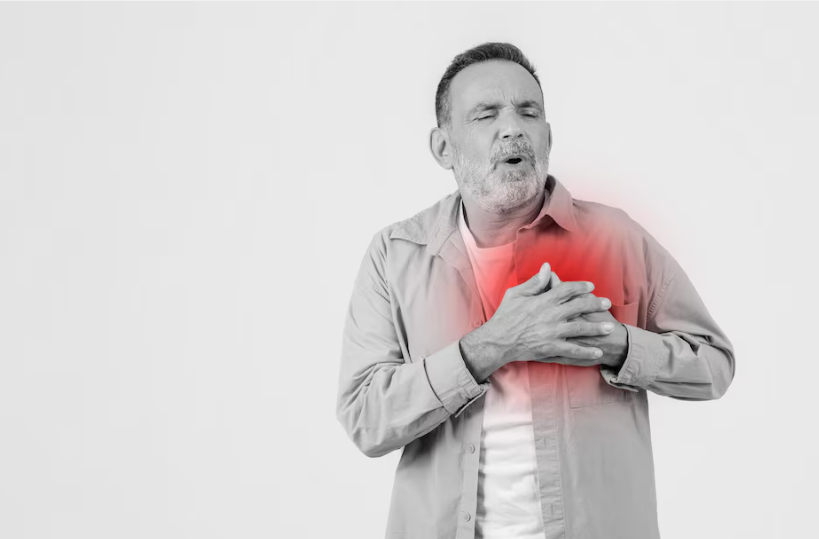According to Doctor, it can be mild and feel like discomfort or heaviness, or it can be severe and feel like crushing pain. It can start in the chest and spread to other areas, such as the left or right arm, shoulder, neck, jaw, back, or groin. Shortness of breath and fatigue.
A myocardial infarction – is commonly called a heart attack.
The heart attack ends your life; this causes the heart to suddenly stop beating. People believe so. While this is partially true, the other half of the truth lies in the symptoms seen just before and/or during a heart attack. And it is this part of the truth that can really save a life.
People who have a heart attack are often unaware that they are having a heart attack. This is partly because they are unaware of the associated signs and symptoms and partly because of panic.
It is important to know the symptoms of a heart attack to know what it is.
Heart attack symptoms –
A heart attack can have many symptoms, some of which are more common than others. Men and people assigned male at birth are more likely to have different heart attack symptoms than women and people assigned female at birth.
Here are some important symptoms of a heart attack –
Let us see –
- Chest pain
- Shortness of breath or difficulty breathing.
- Fatigue.
- Insomnia (Dieses of sleep)
- Nausea
- Heart palpitation.
- anxiety
- Sweat
- Feeling dizzy, lightheaded, or faint.
Heart attack symptoms in women and men AFAB –
Medical research in recent years has shown that women and men with AFAB are less likely to have chest pain or indigestion-like discomfort. They are more likely to have shortness of breath, fatigue, and insomnia that began before the heart attack. They also have nausea and vomiting or pain in the back, shoulders, neck, arms, or abdomen.
How is a heart attack diagnosed?
Doctors often diagnose heart attacks in the emergency room setting. Anyone with symptoms of a heart attack should have a physical exam, which includes checking pulse, blood oxygen levels and blood pressure, and listening to heart and lung sounds.
Role of History and Symptoms –
The provider will ask about the symptoms you are experiencing. They can also ask someone who was with them to describe what happened.
Role of Blood tests –
During a heart attack, damage to heart muscle cells almost always causes a chemical marker, cardiac troponin, to appear in the bloodstream. Blood tests that look for that marker are among the most reliable methods of diagnosing a heart attack.
(EKG or ECG) –
This is one of the first tests you have when you arrive at the emergency room with symptoms of a heart attack.
Echocardiogram –
Using ultrasound (high-frequency sound waves), an echocardiogram creates images of the inside and outside of your heart.
Angiography –
This test shows areas with little or no blood flow.
CT scan of the heart –
This creates a very detailed scan of your heart.
Heart MRI –
This test uses a powerful magnetic field and computer processing to create an image of your heart.
Nuclear scan of the heart –
Like angiography, these scans inject a radioactive dye into the blood. What sets them apart from angiograms is that they use computer-enhanced methods such as computed tomography or positron emission tomography.
How is heart attack treated?
Treating a heart attack means restoring blood flow to the affected heart muscle as quickly as possible. This can happen in a variety of ways, from medications to surgery.
Here are some important treatment methods –
Role of Supplemental oxygen –
If people have trouble breathing or low blood oxygen levels, they are often given supplemental oxygen along with other heart attack treatments. You can inhale oxygen through a tube that is placed just below your nose or through a mask that is placed over your nose and mouth. This increases the amount of oxygen circulating in the blood and reduces stress on the heart. Maybe it’s first aid.
Medications –
- Effect of anti-clotting medications
- Effect of nitroglycerin
- Effect of Thrombolytic (clot-busting) medications
- Effect of anti-arrhythmia medications
- Effect of pain medications
How can I reduce my risk of heart attack?
However, there are many risk factors that you cannot control. But there are many ways you can help yourself and lower your risk of a heart attack.
Here are some important tips to reduce heart attacks –
- Schedule a checkup – blood pressure, blood sugar level, cholesterol level and more.
- Quit tobacco products
- Exercise regularly
- Have a healthy diet
- Maintain a weight that is healthy for you
- Manage your existing health conditions:
- Reduce your stress
- Take your medications as prescribed
- Keep all your medical appointments
Being an active contributor to your health doesn’t mean you have to make all of your lifestyle changes yourself. Ask your primary care provider and other providers on your health care team for help. They can provide you with the information and resources you need.
If you have already had a heart attack, the goal of this program is to lower your chances of having a second heart attack. These medically supervised programs provide counseling and focus on the same healthy living goals listed above. It is very important for us to follow all the steps regarding heart health.





